MENU
The Electronic Scholarly Publishing Project: Providing access to classic scientific papers and other scholarly materials, since 1993. More About: ESP | OUR CONTENT | THIS WEBSITE | WHAT'S NEW | WHAT'S HOT
Comparative Timelines
The ESP Timeline (one of the site's most popular features) has been completely updated to allow the user to select (using the timeline controls above each column) different topics for the left and right sides of the display.
Select:
New Left Column
New Left Column
Dates
Decade
New Right Column
New Right Column
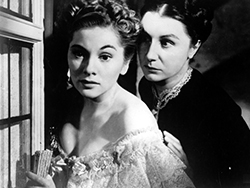 Rebecca wins Academy Award for best picture. The darkest aspects of the Daphne du Maurier novel were cleaned up a little, but the film was popular then and still remains a fan favorite. It's the only Alfred Hitchcock film to take the top Academy Award.
Rebecca wins Academy Award for best picture. The darkest aspects of the Daphne du Maurier novel were cleaned up a little, but the film was popular then and still remains a fan favorite. It's the only Alfred Hitchcock film to take the top Academy Award.
1940
(no entry for this year)
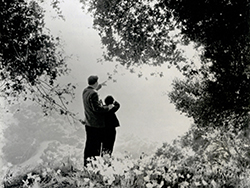 How Green Was My Valley wins Academy Award for best picture. The drama was set in a Welsh mining village, with director John Ford winning one of the film's five Oscars. Even then, many were surprised that the movie beat Orson Welles Citizen Kane, but a Variety reporter at the time attributed that to the 6,000 movie extras who voted on Oscar's top prize: The mob prefers a regular guy to a genius.
How Green Was My Valley wins Academy Award for best picture. The drama was set in a Welsh mining village, with director John Ford winning one of the film's five Oscars. Even then, many were surprised that the movie beat Orson Welles Citizen Kane, but a Variety reporter at the time attributed that to the 6,000 movie extras who voted on Oscar's top prize: The mob prefers a regular guy to a genius.
1941
(no entry for this year)
 Mrs. Miniver wins Academy Award for best picture. The film, about a British family during the early days of World War II, came at just the right time, reassuring Americans that their newish war effort was the right decision.
Mrs. Miniver wins Academy Award for best picture. The film, about a British family during the early days of World War II, came at just the right time, reassuring Americans that their newish war effort was the right decision.
1942
(no entry for this year)
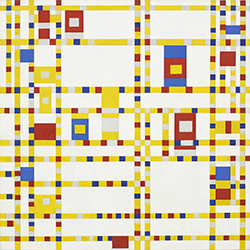 Painting by Piet Mondrian: Broadway Boogie Woogie was completed in 1943, shortly after Mondrian moved to New York in 1940. Compared to his earlier work, the canvas is divided into a much larger number of squares. Although he spent most of his career creating abstract work, this painting is inspired by clear real-world examples: the city grid of Manhattan, and the Broadway boogie woogie, a type of music Mondrian loved. The painting was bought by the Brazilian sculptor Maria Martins for the price of $800 at the Valentine Gallery in New York City, after Martins and Mondrian both exhibited there in 1943. Martins later donated the painting to the Museum of Modern Art in New York City.
Painting by Piet Mondrian: Broadway Boogie Woogie was completed in 1943, shortly after Mondrian moved to New York in 1940. Compared to his earlier work, the canvas is divided into a much larger number of squares. Although he spent most of his career creating abstract work, this painting is inspired by clear real-world examples: the city grid of Manhattan, and the Broadway boogie woogie, a type of music Mondrian loved. The painting was bought by the Brazilian sculptor Maria Martins for the price of $800 at the Valentine Gallery in New York City, after Martins and Mondrian both exhibited there in 1943. Martins later donated the painting to the Museum of Modern Art in New York City.
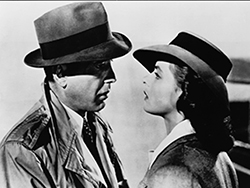 Casablanca wins Academy Award for best picture. The WWII drama represents the studio system at its best, where all the talent (behind and in front of the camera) worked at their peak. Humphrey Bogart and Ingrid Bergman were not the studio's first choices for their roles, but they remain one of the screen's all-time great romantic pairings.
Casablanca wins Academy Award for best picture. The WWII drama represents the studio system at its best, where all the talent (behind and in front of the camera) worked at their peak. Humphrey Bogart and Ingrid Bergman were not the studio's first choices for their roles, but they remain one of the screen's all-time great romantic pairings.
1943
 Painting by Piet Mondrian: Broadway Boogie Woogie was completed in 1943, shortly after Mondrian moved to New York in 1940. Compared to his earlier work, the canvas is divided into a much larger number of squares. Although he spent most of his career creating abstract work, this painting is inspired by clear real-world examples: the city grid of Manhattan, and the Broadway boogie woogie, a type of music Mondrian loved. The painting was bought by the Brazilian sculptor Maria Martins for the price of $800 at the Valentine Gallery in New York City, after Martins and Mondrian both exhibited there in 1943. Martins later donated the painting to the Museum of Modern Art in New York City.
Painting by Piet Mondrian: Broadway Boogie Woogie was completed in 1943, shortly after Mondrian moved to New York in 1940. Compared to his earlier work, the canvas is divided into a much larger number of squares. Although he spent most of his career creating abstract work, this painting is inspired by clear real-world examples: the city grid of Manhattan, and the Broadway boogie woogie, a type of music Mondrian loved. The painting was bought by the Brazilian sculptor Maria Martins for the price of $800 at the Valentine Gallery in New York City, after Martins and Mondrian both exhibited there in 1943. Martins later donated the painting to the Museum of Modern Art in New York City.
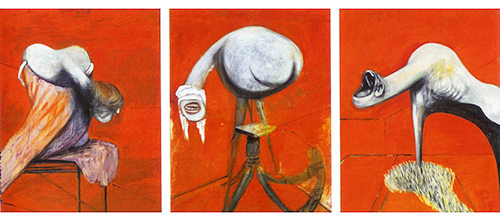 Triptych by Francis Bacon: Three Studies for Figures at the Base of a Crucifixion comprises three canvasses that are based on the Eumenides — or Furies — of Aeschylus's Oresteia, and that depict three writhing anthropomorphic creatures set against a flat burnt orange background. It was executed in oil paint and pastel on Sundeala fibre board and completed within two weeks. The triptych summarises themes explored in Bacon's previous work, including his examination of Picasso's biomorphs and his interpretations of the Crucifixion and the Greek Furies. The Three Studies are generally considered Bacon's first mature piece. When the painting was first exhibited in 1945 it caused a sensation and established him as one of the foremost post-war painters. Remarking on the cultural significance of Three Studies, the critic John Russell observed in 1971 that "there was painting in England before the Three Studies, and painting after them, and no one ... can confuse the two".
Triptych by Francis Bacon: Three Studies for Figures at the Base of a Crucifixion comprises three canvasses that are based on the Eumenides — or Furies — of Aeschylus's Oresteia, and that depict three writhing anthropomorphic creatures set against a flat burnt orange background. It was executed in oil paint and pastel on Sundeala fibre board and completed within two weeks. The triptych summarises themes explored in Bacon's previous work, including his examination of Picasso's biomorphs and his interpretations of the Crucifixion and the Greek Furies. The Three Studies are generally considered Bacon's first mature piece. When the painting was first exhibited in 1945 it caused a sensation and established him as one of the foremost post-war painters. Remarking on the cultural significance of Three Studies, the critic John Russell observed in 1971 that "there was painting in England before the Three Studies, and painting after them, and no one ... can confuse the two".
 Going My Way wins Academy Award for best picture. Writer-director Leo McCarey once again proved his ability to balance tears and laughs, in this tale of a rule-breaking priest (Oscar winner Bing Crosby) taking over a New York parish from a retiring priest. In the latter role, Barry Fitzgerald was oddly nominated as both lead and supporting actor, winning in the latter category.
Going My Way wins Academy Award for best picture. Writer-director Leo McCarey once again proved his ability to balance tears and laughs, in this tale of a rule-breaking priest (Oscar winner Bing Crosby) taking over a New York parish from a retiring priest. In the latter role, Barry Fitzgerald was oddly nominated as both lead and supporting actor, winning in the latter category.
1944
 Triptych by Francis Bacon: Three Studies for Figures at the Base of a Crucifixion comprises three canvasses that are based on the Eumenides — or Furies — of Aeschylus's Oresteia, and that depict three writhing anthropomorphic creatures set against a flat burnt orange background. It was executed in oil paint and pastel on Sundeala fibre board and completed within two weeks. The triptych summarises themes explored in Bacon's previous work, including his examination of Picasso's biomorphs and his interpretations of the Crucifixion and the Greek Furies. The Three Studies are generally considered Bacon's first mature piece. When the painting was first exhibited in 1945 it caused a sensation and established him as one of the foremost post-war painters. Remarking on the cultural significance of Three Studies, the critic John Russell observed in 1971 that "there was painting in England before the Three Studies, and painting after them, and no one ... can confuse the two".
Triptych by Francis Bacon: Three Studies for Figures at the Base of a Crucifixion comprises three canvasses that are based on the Eumenides — or Furies — of Aeschylus's Oresteia, and that depict three writhing anthropomorphic creatures set against a flat burnt orange background. It was executed in oil paint and pastel on Sundeala fibre board and completed within two weeks. The triptych summarises themes explored in Bacon's previous work, including his examination of Picasso's biomorphs and his interpretations of the Crucifixion and the Greek Furies. The Three Studies are generally considered Bacon's first mature piece. When the painting was first exhibited in 1945 it caused a sensation and established him as one of the foremost post-war painters. Remarking on the cultural significance of Three Studies, the critic John Russell observed in 1971 that "there was painting in England before the Three Studies, and painting after them, and no one ... can confuse the two".
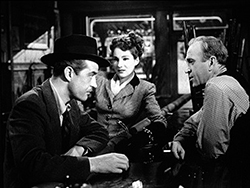 The Lost Weekend wins Academy Award for best picture. The film, directed by Billy Wilder, was widely admired even though it was controversial: Though movies had featured drunks since the silent days, it was considered daring to address the subject head-on.
The Lost Weekend wins Academy Award for best picture. The film, directed by Billy Wilder, was widely admired even though it was controversial: Though movies had featured drunks since the silent days, it was considered daring to address the subject head-on.
1945
(no entry for this year)
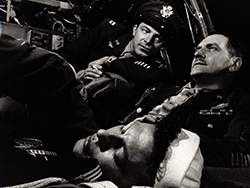 The Best Years of Our Lives wins Academy Award for best picture. The world population was just adjusting to life after World War II and some film executives feared that audiences wanted escapism, not a movie reflecting their lives. But it was a huge hit, and its honesty in dealing with civilian changes and vulnerabilities are still powerful. It was produced by Samuel Goldwyn, directed by William Wyler.
The Best Years of Our Lives wins Academy Award for best picture. The world population was just adjusting to life after World War II and some film executives feared that audiences wanted escapism, not a movie reflecting their lives. But it was a huge hit, and its honesty in dealing with civilian changes and vulnerabilities are still powerful. It was produced by Samuel Goldwyn, directed by William Wyler.
1946
(no entry for this year)
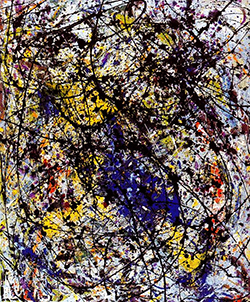 Painting by Jackson Pollock: Reflections of the Big Dipper, consisting of built up layers of paint with dripped enamel as the final touch, concluding the composition. It was around 1947 that Jackson Pollock traded in his brushes for sticks, trowels and knives and began adding foreign matter, such as sand, broken glass, nails, coins, paint-tube tops and bottle caps to his canvases. Reflection of the Big Dipper was exhibited at the Betty Parsons Gallery in 1948, along with sixteen other paintings by Jackson Pollock. The show received positive reviews. Pollock's works from this time are a transitional step between a more traditional handling of paint and his revolutionary technique of dripping paint on canvases off a large scale.
Painting by Jackson Pollock: Reflections of the Big Dipper, consisting of built up layers of paint with dripped enamel as the final touch, concluding the composition. It was around 1947 that Jackson Pollock traded in his brushes for sticks, trowels and knives and began adding foreign matter, such as sand, broken glass, nails, coins, paint-tube tops and bottle caps to his canvases. Reflection of the Big Dipper was exhibited at the Betty Parsons Gallery in 1948, along with sixteen other paintings by Jackson Pollock. The show received positive reviews. Pollock's works from this time are a transitional step between a more traditional handling of paint and his revolutionary technique of dripping paint on canvases off a large scale.
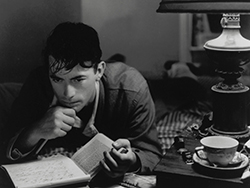 Gentleman's Agreement wins Academy Award for best picture. The Elia Kazan-directed drama, starring Gregory Peck, was another hot-button winner, as it addressed the topic of anti-Semitism.
Gentleman's Agreement wins Academy Award for best picture. The Elia Kazan-directed drama, starring Gregory Peck, was another hot-button winner, as it addressed the topic of anti-Semitism.
1947
 Painting by Jackson Pollock: Reflections of the Big Dipper, consisting of built up layers of paint with dripped enamel as the final touch, concluding the composition. It was around 1947 that Jackson Pollock traded in his brushes for sticks, trowels and knives and began adding foreign matter, such as sand, broken glass, nails, coins, paint-tube tops and bottle caps to his canvases. Reflection of the Big Dipper was exhibited at the Betty Parsons Gallery in 1948, along with sixteen other paintings by Jackson Pollock. The show received positive reviews. Pollock's works from this time are a transitional step between a more traditional handling of paint and his revolutionary technique of dripping paint on canvases off a large scale.
Painting by Jackson Pollock: Reflections of the Big Dipper, consisting of built up layers of paint with dripped enamel as the final touch, concluding the composition. It was around 1947 that Jackson Pollock traded in his brushes for sticks, trowels and knives and began adding foreign matter, such as sand, broken glass, nails, coins, paint-tube tops and bottle caps to his canvases. Reflection of the Big Dipper was exhibited at the Betty Parsons Gallery in 1948, along with sixteen other paintings by Jackson Pollock. The show received positive reviews. Pollock's works from this time are a transitional step between a more traditional handling of paint and his revolutionary technique of dripping paint on canvases off a large scale.
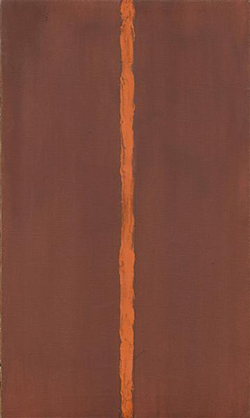 Painting by Barnett Newman: Onement I features the first full incarnation of what Newman later called a 'zip', a vertical band of color. This motif would play a central role in many of his subsequent paintings. The painting's title is an archaic derivation of the word 'atonement', meaning, "the state of being made into one."
Painting by Barnett Newman: Onement I features the first full incarnation of what Newman later called a 'zip', a vertical band of color. This motif would play a central role in many of his subsequent paintings. The painting's title is an archaic derivation of the word 'atonement', meaning, "the state of being made into one."
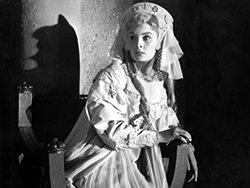 Hamlet wins Academy Award for best picture. The black and white Shakespeare adaptation, from U.K.'s J. Arthur Rank-Two Cities, was the first non-Hollywood film to take the top award. And Laurence Olivier became the first person to direct himself to a best-actor win.
Hamlet wins Academy Award for best picture. The black and white Shakespeare adaptation, from U.K.'s J. Arthur Rank-Two Cities, was the first non-Hollywood film to take the top award. And Laurence Olivier became the first person to direct himself to a best-actor win.
1948
 Painting by Barnett Newman: Onement I features the first full incarnation of what Newman later called a 'zip', a vertical band of color. This motif would play a central role in many of his subsequent paintings. The painting's title is an archaic derivation of the word 'atonement', meaning, "the state of being made into one."
Painting by Barnett Newman: Onement I features the first full incarnation of what Newman later called a 'zip', a vertical band of color. This motif would play a central role in many of his subsequent paintings. The painting's title is an archaic derivation of the word 'atonement', meaning, "the state of being made into one."
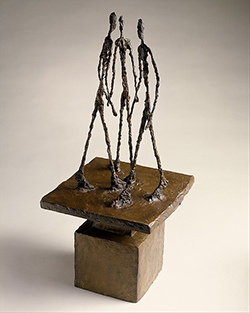 Alberto Giacometti completes Three Men Walking II
Alberto Giacometti completes Three Men Walking II
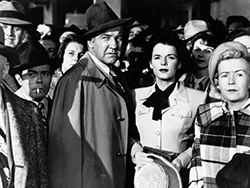 All the King's Men wins Academy Award for best picture. The movie, written and directed by Robert Rossen (nominated in both categories), was based on the novel by Robert Penn Warren. It was a thinly disguised version of Louisiana's Huey Long, and the film's observations about politics still hold up surprisingly well.
All the King's Men wins Academy Award for best picture. The movie, written and directed by Robert Rossen (nominated in both categories), was based on the novel by Robert Penn Warren. It was a thinly disguised version of Louisiana's Huey Long, and the film's observations about politics still hold up surprisingly well.
1949
 Alberto Giacometti completes Three Men Walking II
Alberto Giacometti completes Three Men Walking II
ESP Quick Facts
ESP Origins
In the early 1990's, Robert Robbins was a faculty member at Johns Hopkins, where he directed the informatics core of GDB — the human gene-mapping database of the international human genome project. To share papers with colleagues around the world, he set up a small paper-sharing section on his personal web page. This small project evolved into The Electronic Scholarly Publishing Project.
ESP Support
In 1995, Robbins became the VP/IT of the Fred Hutchinson Cancer Research Center in Seattle, WA. Soon after arriving in Seattle, Robbins secured funding, through the ELSI component of the US Human Genome Project, to create the original ESP.ORG web site, with the formal goal of providing free, world-wide access to the literature of classical genetics.
ESP Rationale
Although the methods of molecular biology can seem almost magical to the uninitiated, the original techniques of classical genetics are readily appreciated by one and all: cross individuals that differ in some inherited trait, collect all of the progeny, score their attributes, and propose mechanisms to explain the patterns of inheritance observed.
ESP Goal
In reading the early works of classical genetics, one is drawn, almost inexorably, into ever more complex models, until molecular explanations begin to seem both necessary and natural. At that point, the tools for understanding genome research are at hand. Assisting readers reach this point was the original goal of The Electronic Scholarly Publishing Project.
ESP Usage
Usage of the site grew rapidly and has remained high. Faculty began to use the site for their assigned readings. Other on-line publishers, ranging from The New York Times to Nature referenced ESP materials in their own publications. Nobel laureates (e.g., Joshua Lederberg) regularly used the site and even wrote to suggest changes and improvements.
ESP Content
When the site began, no journals were making their early content available in digital format. As a result, ESP was obliged to digitize classic literature before it could be made available. For many important papers — such as Mendel's original paper or the first genetic map — ESP had to produce entirely new typeset versions of the works, if they were to be available in a high-quality format.
ESP Help
Early support from the DOE component of the Human Genome Project was critically important for getting the ESP project on a firm foundation. Since that funding ended (nearly 20 years ago), the project has been operated as a purely volunteer effort. Anyone wishing to assist in these efforts should send an email to Robbins.
ESP Plans
With the development of methods for adding typeset side notes to PDF files, the ESP project now plans to add annotated versions of some classical papers to its holdings. We also plan to add new reference and pedagogical material. We have already started providing regularly updated, comprehensive bibliographies to the ESP.ORG site.
ESP Picks from Around the Web (updated 06 MAR 2017 )
Old Science

Weird Science

Treating Disease with Fecal Transplantation
Fossils of miniature humans (hobbits) discovered in Indonesia

Dinosaur tail, complete with feathers, found preserved in amber.
Astronomy

Mysterious fast radio burst (FRB) detected in the distant universe.